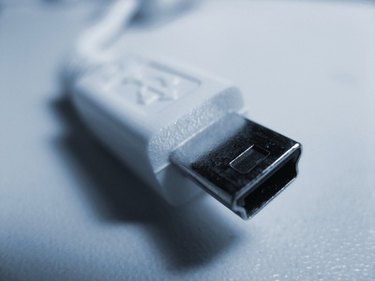
The USB (Universal Serial Bus) ports on your computer are a powerful interface that allows you to connect to a wide range of peripheral devices instantly and without rebooting your system. Many USB devices draw power directly from the USB hub, as opposed to drawing power from an electrical outlet. USB devices that are connected through the same hub will not function correctly if the devices are consuming more than the maximum usage limit for that hub. Fortunately, there is a way to monitor the USB power usage for each device through the Windows Device Manager.
Step 1
Click the "Start" menu, then click "Run".
Video of the Day
Step 2
Type "devmgmt.msc" in the "Run" dialog box. Click the "OK" button. This will bring up the Device Manager window.
Step 3
Double-click the "Universal Serial Bus controllers" branch to expand it.
Step 4
Right-click on one of the entries named "USB Root Hub" and choose "Properties" from the menu.
Step 5
Click the "Power" tab. You will find the total power available to that hub listed under "Hub information". In the "Attached Devices" area you can see the devices that are connected through that hub and how much power each device is using.
Step 6
Close the "USB Root Hub Properties" window. Right-click and select "Properties" for each USB hub to check the total power provided by that USB hub and the power being used by the devices connected to it.
Video of the Day